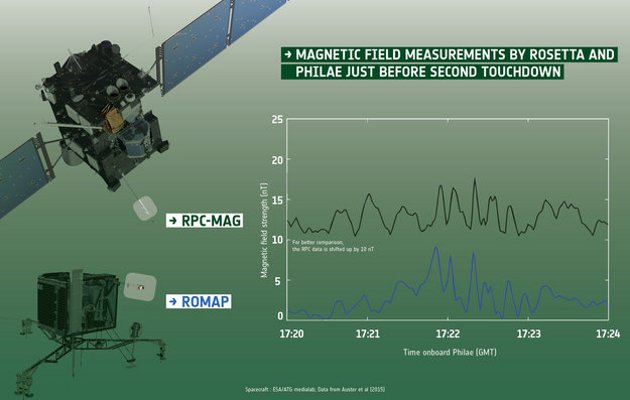EIRNS—The panoply of spacecraft currently exploring the near and outer reaches of the Solar System are returning new discoveries, challenging long-held notions of how Earth’s neighbourhood evolved and developed.

* The Moon — Chinese scientists have released additional data from rover Yutu’s exploration of the Moon. Although the small craft has not been able to rove, its ground-penetrating radar has continued to collect data. An article in the U.S. Proceedings of the National Academy of Sciences reports that, although it was previously believed that the Moon has been geologically inactive since 3.1 billion years ago, a large volcanic eruption took place about 2.5 billion years ago. "It’s like an old man in a wheelchair who can suddenly run again," was the poetic description by a researcher at the Institute of Geology and Geophysics at the Chinese Academy of Sciences. Yutu’s radar was able to "see" layers of volcanic basalt at depths beneath the surface that indicate the more recent geological activity.
 |
|
Rosetta and Philae investigate magnetic properties of Comet 67P/C-G |
* Comet 67P/Churyumov-Gerasimenko — New results from the Rosetta spacecraft and the Philae lander, describing the magnetic properties of the comet, indicate that the comet’s nucleus is not magnetized. Scientists believe that magnetic fields threading through the proto-planetary disc could have played an important role in clumping together primordial dust to accreted to form larger bodies. But it is unclear how crucial magnetic fields were later, when it is believed that gravity dominated the process. Because Philae bounced three times before coming to rest, data on magnetic fields were collected at four different points, and different altitudes. The conclusion is that the small magnetic field Philae detected was not from the comet’s nucleus, but from the solar wind, helping to clarify solar system body evolution.
 |
|
The strange bright spots on Ceres are easily visible here in these images captured by the visible and infrared mapping spectrometer on NASA’s Dawn spacecraft, which has been orbiting the dwarf planet in the asteroid belt since March. |
* Ceres—Rather than being a body that was created in the most active, initial stages of Solar System formation, but has since been inert, the Dawn spacecraft science team announced yesterday that it has concluded, that although Ceres has been considered a big asteroid, it actually was geologically active, like a planet. Recently, two white spots were observed on Ceres, which appear to be hot and cold spots, along with other distinguishing features which are not found on asteroids. Chris Russell, principal investigator for the mission, said, "This dwarf planet was not just an inert rock throughout its history. It was active, with processes that resulted in different materials in different regions." As Dawn gets closer, more will be revealed.

This map shows the route driven by NASA’s Mars rover Curiosity through the 944 Martian day, or sol, of the rover’s mission on Mars (April, 03, 2015).
Numbering of the dots along the line indicate the sol number of each drive. North is up. The scale bar is 1 kilometer ( 0.62 mile). From Sol 940 to Sol 944, Curiosity had driven a straight line distance of about 24.90 feet (7.59 meters).
The base image from the map is from the High Resolution Imaging Science Experiment Camera (HiRISE) in NASA’s Mars Reconnaissance Orbiter. NASA/JPL-Caltech/Univ. of Arizona
* Mars—Closer to home, the Curiosity rover has made a stunning discovery, vindicating theories some scientists have advanced, on the presence of liquid water on Mars. Curiosity has found that thin layers of very salty water can form and evaporate frequently on the surface of Mars. Salt in the water can lower the freezing point by more than 70 degrees, scientists explain. Perchlorate salts, which have been found on Mars, can absorb water vapour from the atmosphere and turn it into a briny liquid. Under certain conditions liquid water is possible, and from studying the weather data returned by Curiosity, they have determined that such conditions occur every day in months during the winter and spring. These findings could have implications for the possibility of life on Mars.
Marsha Freeman





